
Vegetation Around Las Vegas
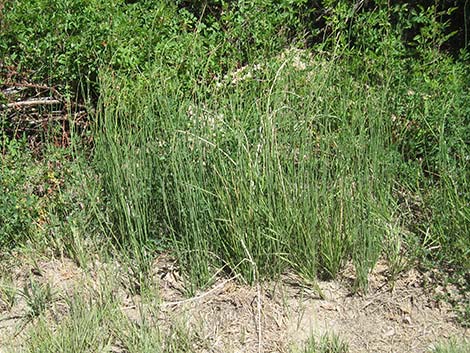 |
General: Smooth Horsetail (Equisetum laevigatum) is an odd plant that evolved early in the history of plants and has changed little since then. During the Age of Dinosaurs, Horsetails grew to about 50 feet tall. Today, the tallest reach only about 6 feet. Smooth Horsetail can be recognized by the bare green stem with a cone at the top; dark bands every few inches up the stem; and few, if any, branches along the stem. These plants do not produce flowers. Instead, they produce cones, which can be seen growing atop the stem during the spring and then dried into summer and fall. Horsetails require wet soils, and so are uncommon in the desert. However, they are fairly common components of vegetation associations in wet areas around streams and springs in the Upper Sonoran (Mojave Desert Scrub and Pinyon-Juniper Woodland), Transition (Yellow Pine Forest), and Canadian (Pine-Fir Forest) life zones. |
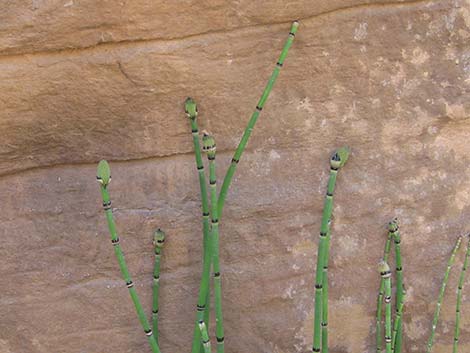 |
Family: Horsetail (Equisetaceae). Other Names: Scouringrush, Horsetail. Plant Form: Perennial herb. Single erect, rigid, tubular stem with a seed cone on the tip. Height: Usually 2-3 feet (to 6 feet). Stems: Single erect, rigid, tubular, green, unbranched. Darker nodes 3-4 inches apart along the stem. Stems arise from rhizomes, so there may be many "single" stems growing densely in an area that are part of the same plant. Leaves: Usually none to the casual observer. Leaves are scale-like, brown, whorled, and fused to nodal sheaths. |
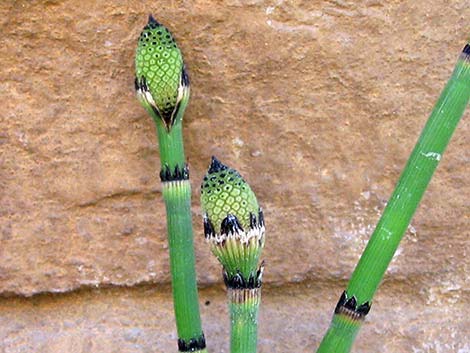 Horsetail cones are similar to pine cones |
Flowers: This is not a flowering plant, so there are no flowers per se. Sporangia (spore producing structures) are clustered into terminal cones. Seeds: This plant does not produce seeds; it produces tiny, dust-like spores. Habitat: Edges of ponds, streams, spring pools, and other sheltered damp areas. Elevation: To about 9,000 feet. Distribution: Throughout most of North America. Comments: |
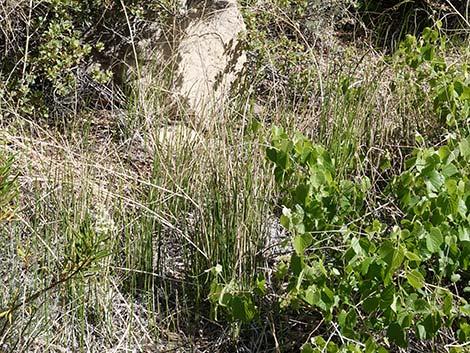 Smooth Horsetail at a desert spring with Wild Grapes |
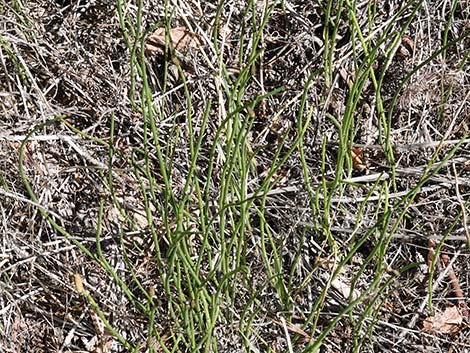 Smooth Horsetail at a desert spring |
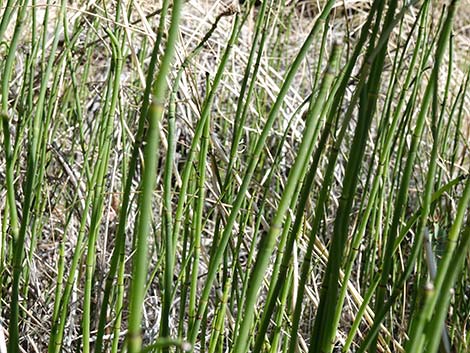 |
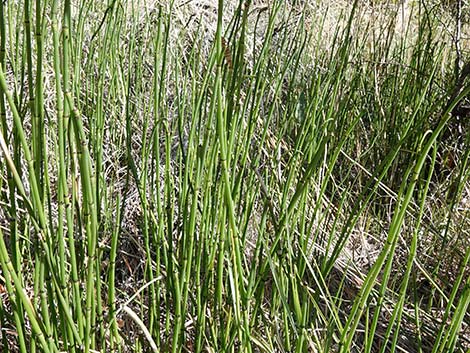 |
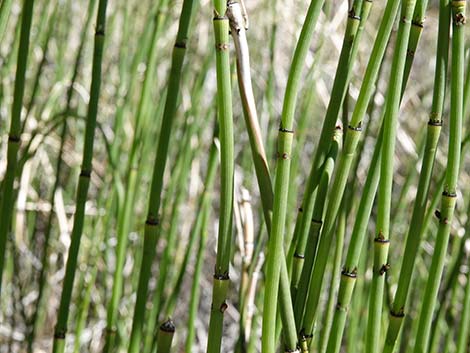 |
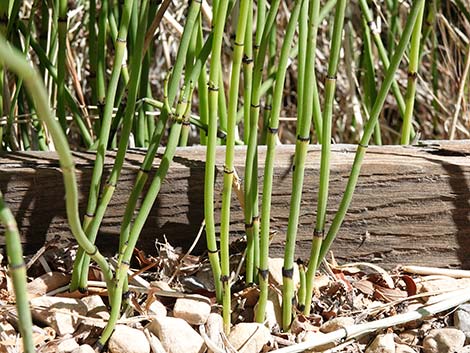 |
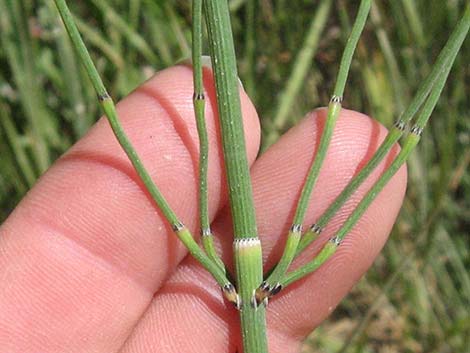 Smooth Horsetail sometimes gets a few branches |
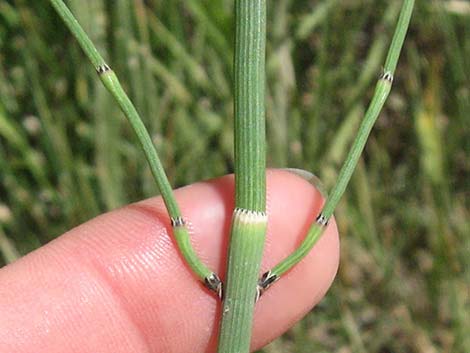 Smooth Horsetail sometimes gets a few branches |
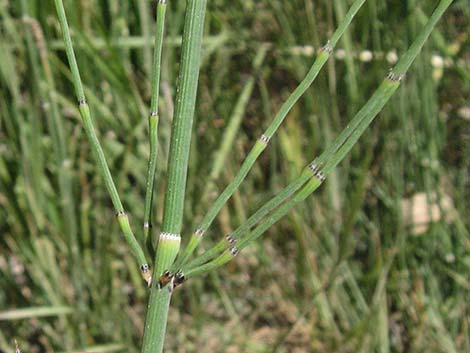 Smooth Horsetail sometimes gets a few branches |
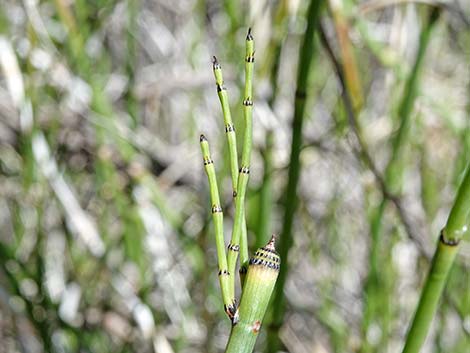 Smooth Horsetail sometimes gets a few branches |
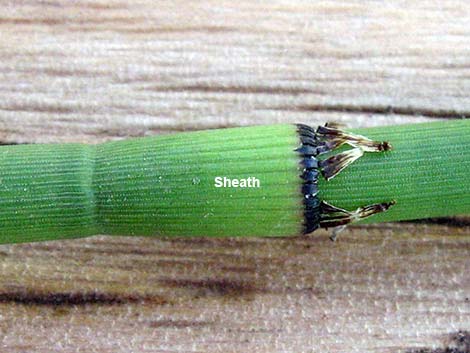 The sheath is longer than wide; one dark band |
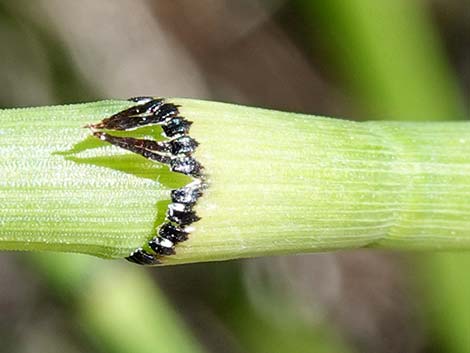 The sheath is longer than wide; one dark band. |
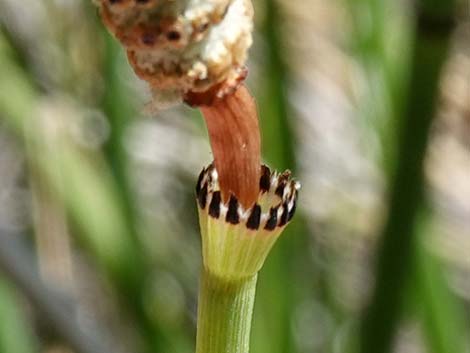 Cones arise from inside the sheath at the tip of a stem |
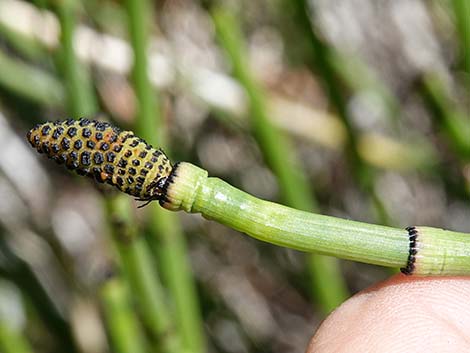 Fresh cone |
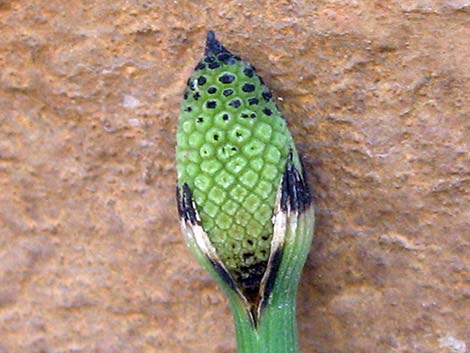 Horsetail cones are similar to pine cones |
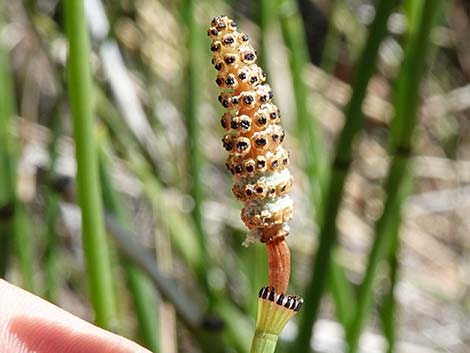 Older cone |
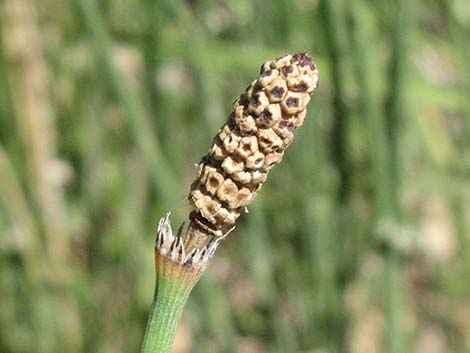 Dry cone in late summer |
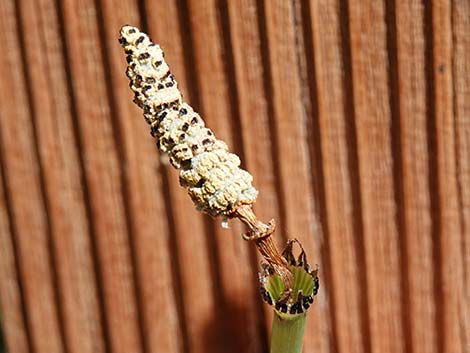 Dry cone in late summer |
All distances, elevations, and other facts are approximate.
![]() ; Last updated 220718
; Last updated 220718
| All Aquatics | Plant Species Index | Glossary | Copyright, Conditions, Disclaimer | Home |